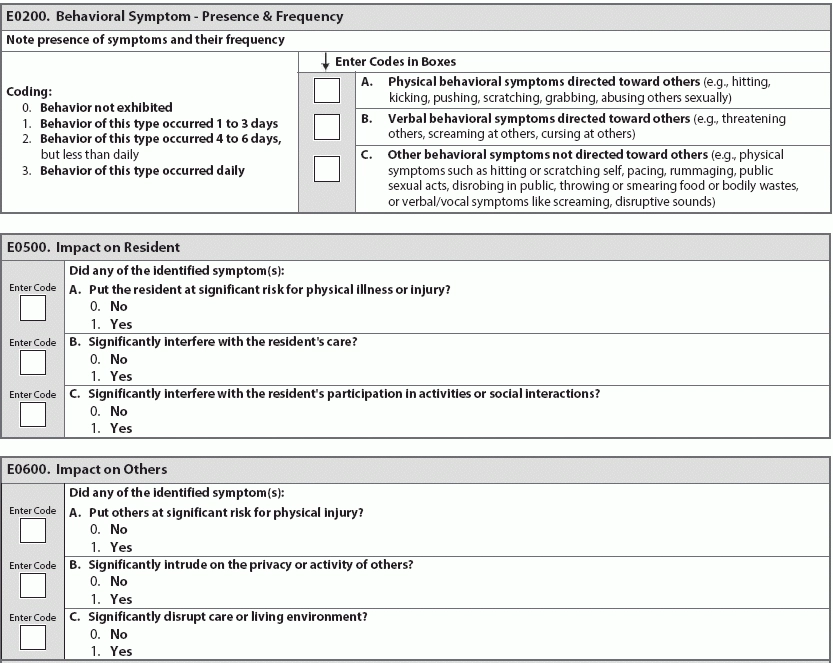Resident's Impact on Self and Others
How do you judge ‘significant’ impact in E0500 and E0600? The MDS encourages SNF staff to evaluate a resident’s behavioral symptoms through observation of how those behaviors affect the resident and others, and to record those instances in items E0500 (Impact on Resident) and E0600 (Impact on Others). But the MDS language is a little vague, and you may not know how to define “significant” in order to code these items accurately. Assessment Basics When evaluating a resident’s behavioral symptoms to code E0500 and E0600, the lookback period is seven days. Look at the resident’s medical record, and talk to all of your team members across all disciplines and shifts. Don’t forget about the ADLs where residents’ tasks involve other residents or activities that are limited to a certain timeframe, like mealtime. Pay special attention to behaviors that could cause physical injury to the resident or someone else, as well as behaviors that prevented or otherwise interfered with the care provided to resident or the resident’s participation in daily living activities or social activities. Coding Instructions To code E0500 and E0600, you need to use the answers provided for E0200 (Behavioral Symptom – Presence & Frequency). The symptoms the MDS lists and wants you to record are mostly negative interactions, such as: But how do you understand what qualifies as “significant,” per the language of the MDS items? The MDS helps you evaluate one facet of significance by determining and recording the frequency of the negative behaviors in item E0200. You are instructed to determine whether the: But a physician’s take can be the most helpful. “The assessing clinician must identify the behavior and the risk it poses to the resident or others in terms of frequency and impact,” says Sally Fecto, senior vice president of field operations at Harmony Healthcare International in Topsfield, Massachusetts. “The clinician must identify the potential for physical illness or injury in reviewing whether the risk is considered significant.” Coding Instructions For E0500 (Impact on Resident), you’re simply coding 0 (No) or 1 (Yes) for sub-items E0500A, E0500B, and E0500C. To code this accurately, you have to decide whether the resident’s identified behavioral symptom(s), taken from your answers to E0200 (Behavioral Symptoms – Presence & Frequency), put himself or others at “significant” risk. “Any decline in medical or health status, resident to resident assault, incident of fall with or without injury, or elopement related to a behavior is considered significant risk,” Fecto says. For E0600, as well, you’re coding 0 (No) or 1 (Yes) for all sub-items. Again, you are responsible for deciding which behaviors and what frequency of behaviors constitute “significant” risk, intrusion on others’ privacy or activities, and disruption of the resident’s care or social environment. You’ve assessed the behaviors you’re coding here, but how do you assess the severity? The RAI Manual suggests using your own knowledge base: The resident is at significant risk for injuring himself or someone else if “… the risk for physical injury or illness is known to occur commonly under similar circumstances (i.e., with residents who exhibit similar behavior in a similar environment).”

during the seven-day lookback period.

